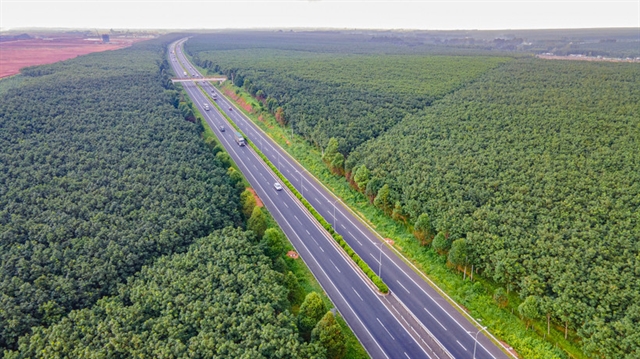 Society
Society

 |
| 2G-only mobile devices remain prevalent among young children and the elderly. — VNA/VNS Photo |
HÀ NỘI — With the shutdown of the 2G network planned for September next year, authorities and telecommunication service providers in Việt Nam are rolling out support schemes to help mobile users make the switch.
Vũ Thu Hiền, head of the Frequency Policy and Planning Division (Authority of Radio Frequency Management) said that the change aims to free up the bandwidth for newer technologies.
2G-only mobile devices will be phased out by September 2024, but this old network system will still be in use, providing services to 3G and 4G subscribers who don’t have access to the more advanced VoLTE technology until September 2026.
As of December 2023, Việt Nam counts around 15 million 2G mobile users, making up around 13 per cent of the total subscriptions.
According to plans, this figure must be reduced to under 5 per cent in the next 10 months for the 2G network shutdown.
Việt Nam's 4G network speed has witnessed a significant increase in the past two years, reaching 44.92Mbps and ranked 57th globally.
As part of the transition, the Ministry of Information and Communications (MIC) has been working to approve financial support for the underprivileged and those in remote areas to switch from 2G mobile devices to newer smartphones.
A total of 400,000 new mobile phones will be given out to people in disadvantaged circumstances, said Deputy Director General of the Authority of Telecommunications Nguyễn Phong Nhã.
He added that mobile network providers should take into account statistics down to the district level to design proper support plans for locals in switching to newer technologies.
“The MIC will work with local authorities to mobilise private resources in helping the underprivileged for a comprehensive transition to 4G network,” said Nhã.
Training is also an important matter, he noted, as this will help locals get used to the new technology, reduce unwanted service fees and avoid malicious mobile applications.
According to Nguyễn Trọng Tính, deputy general director of Viettel Telecom, shutting down 2G services is appropriate in the current context.
The company has deployed multiple solutions to accelerate the transition from 2G to 4G subscriptions in the past four years.
Tính said: “Among Viettel subscribers, there is now only around 2 per cent using the 3G network.
“However, 2G subscribers account for around 16 per cent of Viettel customers.”
In preparation for the 2G network switch-off, Viettel has expanded 4G network coverage to every area where the company’s customers live.
Viettel also works with other service providers to decrease the price of 4G subscription to almost equal to that of 2G, in response to customers’ needs and financial ability.
Alongside policies that encourage subscribers to make the switch to smartphones and the 4G network, the company also limits 2G network-based products and services.
Meanwhile, VNPT, another major telecommunication company, put in place plans to phase out 2G network since 2015, when the number of 2G subscriptions accounted for around 60 per cent of their traffic.
In the past two years, the company has started turning off cell sites that had little to no traffic, including around 10 per cent of 2G-only stations.
VNPT now counts around three million 2G subscribers, around 8 per cent of its total customers.
Mobile network operator Vietnamobile, however, still reports a substantial number of 2G-only subscribers, and said that a roadmap should be put in place regarding 2G network shutdown to ensure uninterrupted service for mobile users.
According to Lê Mai Sơn, deputy head of MobiFone communication department, the company has sent out text messages, made phone calls and assigned staff to each area, while taking steps to turn off 2G service, as these announcements were often overlooked by mobile users.
“Turning off this service can affect people’s business and communication, especially regarding the vulnerable population,” said Sơn.
The transition, if not done well, will lead to a comparison between mobile network operators and therefore comprehensive, coherent actions are required, he added.
Global trend
Statistics from the GSM Association revealed that as of mid-2023, around 149 mobile service providers have been working to turn off older generation networks.
Around 63 per cent of European countries have phased out the 2G network, while this figure in Asia is over 20 per cent.
Since around 2012-2013, Việt Nam’s Authority of Radio Frequency Management has been studying the roadmap used to shut down 2G services in Japan and Europe.
Nguyễn Đình Hùng, a telecommunication expert and director of True Internet Data Centre Vietnam Co Ltd, said some European countries still maintain the 2G network as this is the basis for their emergency numbers, and for utility companies to read electric and water meters remotely.
Việt Nam is not in the same situation, and therefore should shut down the 2G network as soon as possible to make room on the bandwidth for new technologies, he said. — VNS




